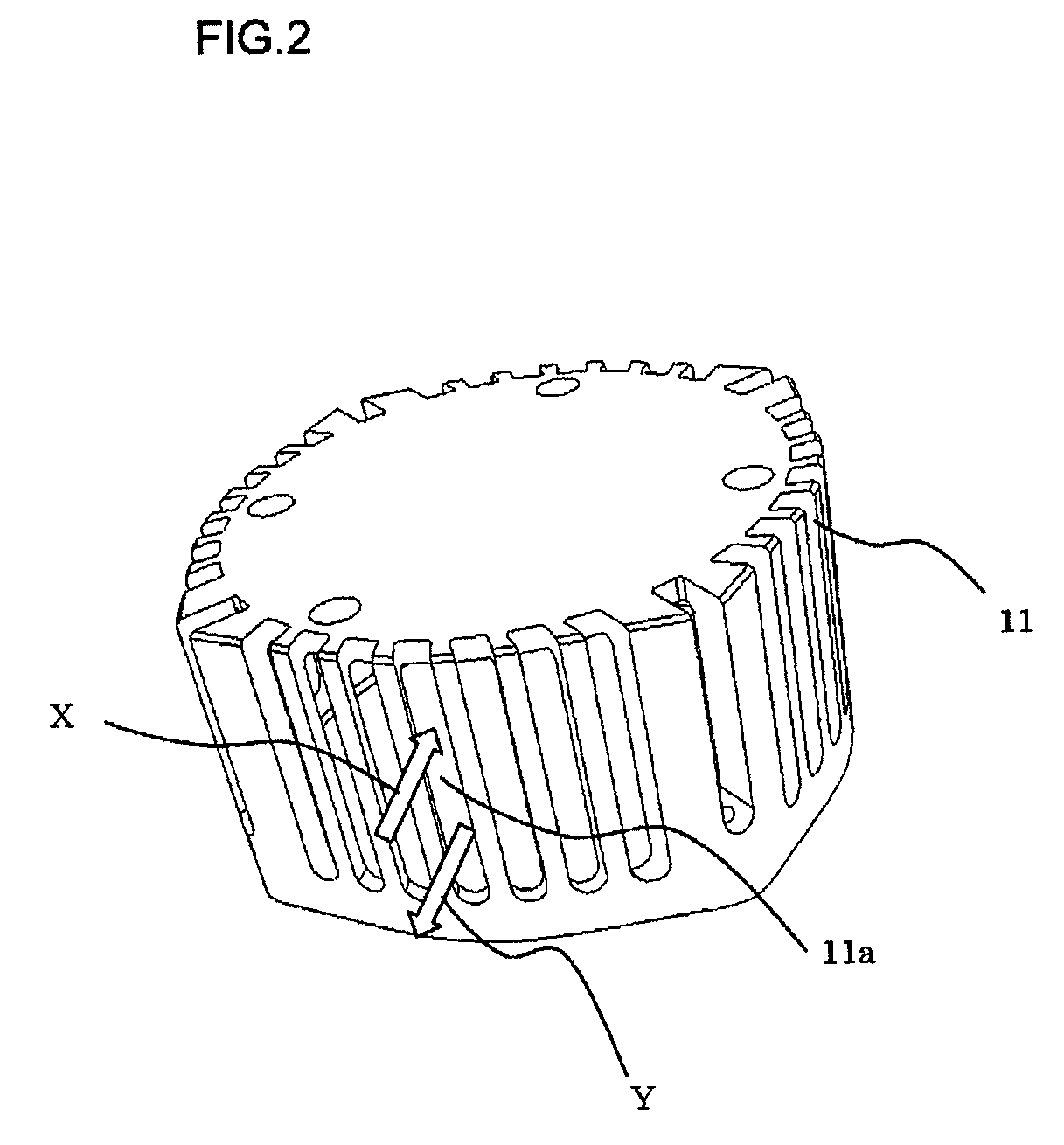Electrical rotating machine with improved heat sink cooling
a technology of electric rotating machines and heat sinks, which is applied in the direction of magnetic circuit rotating parts, magnetic circuit shapes/forms/construction, windings, etc., can solve the problems of short heat transmission path, insufficient output performance, and loss of heat sinks, so as to prevent the electrical potential of heat sinks, reduce heat transmission, and ensure the effect of heat transfer
- Summary
- Abstract
- Description
- Claims
- Application Information
AI Technical Summary
Benefits of technology
Problems solved by technology
Method used
Image
Examples
first embodiment
[0024]Hereinafter, an embodiment of the present invention will be described with reference to drawings. FIG. 1 is a lateral cross-sectional view showing an overall structure of an electrical rotating machine according to a first embodiment of the present invention. FIG. 2 is a perspective view of a rear bracket. FIG. 3 is a top plan view of a heat sink assembly. FIG. 4 is a bottom plan view of the heat sink assembly. FIG. 5 is a top plan view of the heat sink assembly illustrating heat movement. FIG. 6 is a plan view of a sector-shaped heat sink assembly.
[0025]In FIG. 1, an electrical rotating machine 1 includes a housing composed of a front bracket 10 and a rear bracket 11, a stator 16 having a stator winding 16a, and a rotor 15 having a shaft (rotation axis) 13 and a field winding 19. The stator 16 is arranged on the load side of the electrical rotating machine 1, and is supported by an end portion of the front bracket 10 and an end portion of the rear bracket 11. The rotor 15 is ...
second embodiment
[0038]As described above, a plurality of radiation fins 1510 arranged on the rear surface of the heat sink as shown in FIG. 4 are formed in the straight-fin shape, and extend toward the center of the radius in parallel to one another. FIG. 8 is a cross-sectional view cut along a B-B line shown in FIG. 4. When a disc-shaped heat sink 151 is subjected to thermal expansion, the heat sink 151 tends to suffer warping as indicated with a broken line shown in FIG. 8.
[0039]In this case, the fins in the straight-fin shape according to the present invention have a high section modulus against the warping toward the upward direction, the section modulus being proportional to the cube of the height of each fin. Therefore, it is possible to reduce warping caused by repetitive exposure to a high temperature and a low temperature, and to prevent the soldering from being damaged by the warping. Further, compared to a case where fins are formed in a radial-shape in which each fin extends toward the ...
PUM
 Login to View More
Login to View More Abstract
Description
Claims
Application Information
 Login to View More
Login to View More - R&D
- Intellectual Property
- Life Sciences
- Materials
- Tech Scout
- Unparalleled Data Quality
- Higher Quality Content
- 60% Fewer Hallucinations
Browse by: Latest US Patents, China's latest patents, Technical Efficacy Thesaurus, Application Domain, Technology Topic, Popular Technical Reports.
© 2025 PatSnap. All rights reserved.Legal|Privacy policy|Modern Slavery Act Transparency Statement|Sitemap|About US| Contact US: help@patsnap.com



